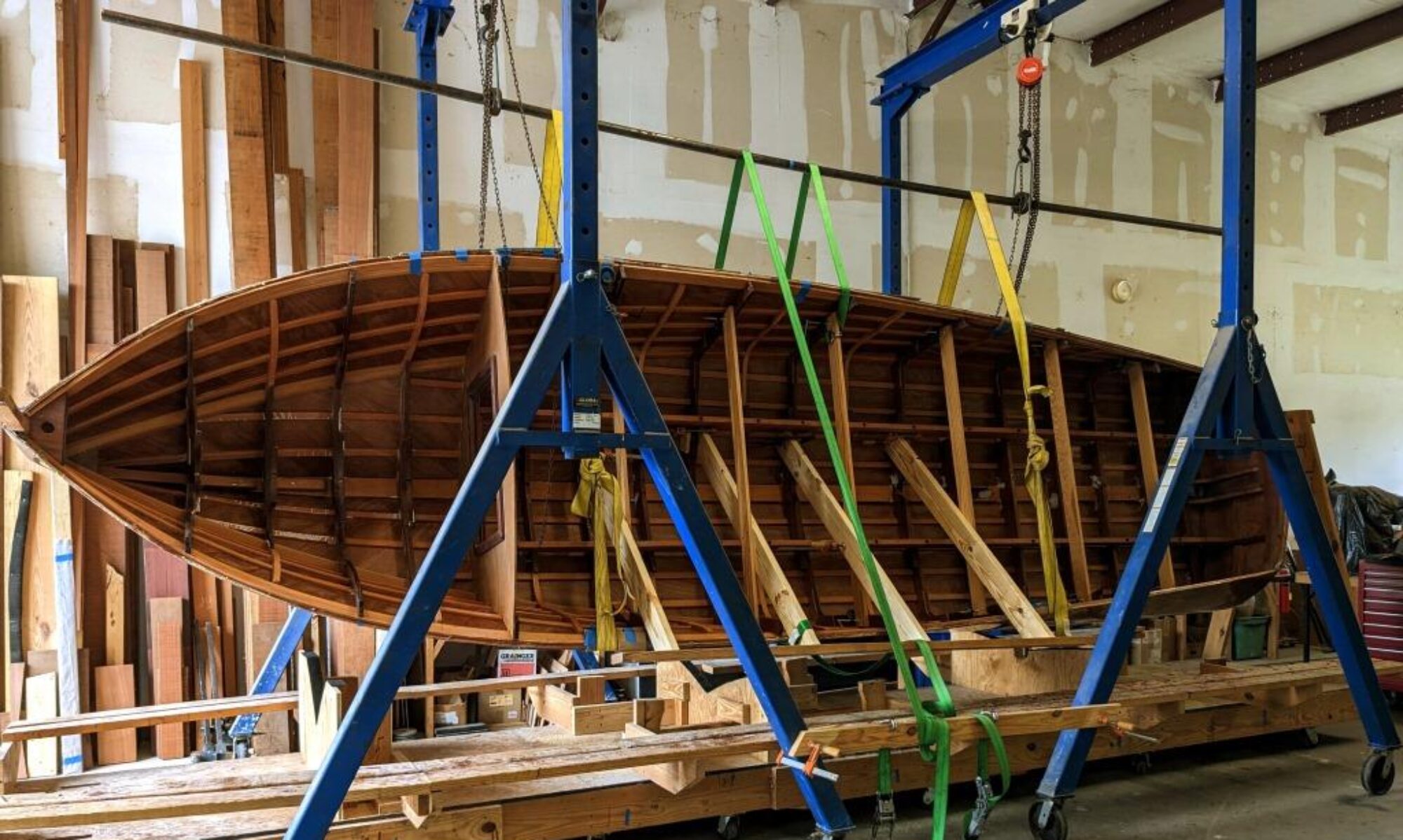
Gunwale is an old nautical term. A wale is a plank on the side of a ship or boat. The top wale on a sailing warship was called the gun wale and was reinforced to carry the stresses imposed by heavy cannon. Typical of nautical terms, it is not pronounced like it is spelled. “Gunnel” is the correct pronunciation. In canoes, it has come to mean the reinforcing strips along the top edge of the boat. Specifically, there are usually two strips, an inwale and an outwale.
That’s what we have, and both need to be replaced. Removal of the old pieces revealed a bit of rot in the top edge of the top strip on each side. Injecting CPES into these strips stiffened them up in preparation for attaching the new pieces.

I decided to make the new pieces out of Fir. It’s moderately rot resistant, fairly tough, and steam-bends fairly easily. You can see from the photo above that there is quite a bit of bend in these pieces–more than you could accomplish without steam. I milled out the general profile of each piece out of a single piece of wood, and drilled the slots in the inwale to allow for drainage when the boat is upside down. Each piece had to be steamed for 4 hours to bend it in place. If you’re interested in steam bending, check out my earlier post on the process here.

The easiest way to hold your piece in the shape you want it after steaming is to clamp it to the boat. That’s what you see here. I’ve clamped the inwale to the outer face of the boat since it’s easier to get to.

Once I had the pieces bent, I fastened them in place with screws and epoxy, sealing the whole assembly with 3 coats of clear epoxy to guard against rot in the future.
